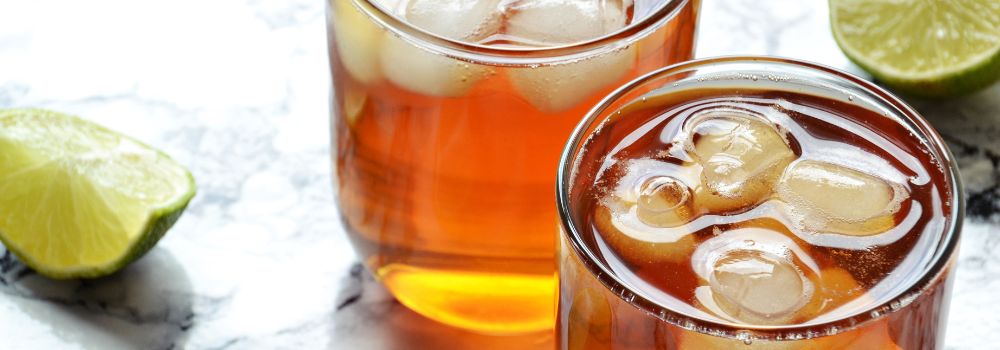Know Your Past
It’s easy to envision our grandparents huddled around a steaming mug of tea during a quaint evening wind-down, but how did that same eons-old traditional drink transform into the uniquely satisfying boba experience we love today?
If you’ve ever pondered the narrative behind the beverage that makes you chew, sip, and go “Mmmm, that’s it,” here’s the history (histor-tea?) of the evolution from tea swirls to boba pearls.
That Bubbly Personality

Even if you’re not personally peddling one of the oldest beverages in the world, you can imagine the tea business must have been a cutthroat one. In order for his tea stand to “stand” out among the competition, an inventive shop owner tried mixing in fruits. This delectable divergence from traditional tea caught the attention of adults and especially children. The stall was so wildly popular that customers lined up down the street! Other stalls soon copied the recipes and success so they wouldn’t get left in the fruit-flavored dust.
New fruits and jellies were gradually added, but to prevent them from lumping into mush at the bottom of the cups, the whole mixture had to be firmly shaken up. This left a frothy, bubbly head on top which coined the first use of the name “bubble tea”!
Those Pearly Whites

Increased affluence in the booming economy of 1980s Taiwan allowed more people to consume drinks for leisure rather than necessity. Cooling the traditionally hot tea with shaved ice transformed it into an all-day any day beverage. Even in peak summer, chilled tea was perfect for fighting off the sweltering Taiwanese humidity!
One leading claim to the boba tea origin belongs to Tu Tsong-he, owner of Hanlin Tea House. He recalls standing at the market, spotting fenyuan (white tapioca balls) and imagining his favorite childhood snack mixed with his favorite drink. Tapioca balls brewed in green tea gave them a shimmering, translucent outside and white interior. To the masses, these resembled a pearl necklace, which affectionately earned the label, “boba pearls.”
 Tu Tsong-he added honey and sugar to make the tea sweeter and even more appealing. Tapioca balls became bigger and darker to achieve a richer taste when submerged in milk teas. Straws – an absolute necessity for modern, on-the-go consumption – were no longer viable in their mass-produced form. To accommodate the bigger boba pearls, Tu Tsong-he approached plastic companies directly to start making the quintessential wide straws we all now know.
Tu Tsong-he added honey and sugar to make the tea sweeter and even more appealing. Tapioca balls became bigger and darker to achieve a richer taste when submerged in milk teas. Straws – an absolute necessity for modern, on-the-go consumption – were no longer viable in their mass-produced form. To accommodate the bigger boba pearls, Tu Tsong-he approached plastic companies directly to start making the quintessential wide straws we all now know.
The alternative origin story is that Liu Han-Chieh, founder of the Chun Shui Tang Tea Room, poured tapioca balls into her tea during a staff meeting. She then encouraged everyone to drink it and the response was such unanimous support that the concoction quickly outsold all their other types of teas over the next few months.
The exact origin isn’t a need-to-know, but boba tea exploded in popularity as a need-to-taste hit.
Well-Traveled
Boba finally made its way across the ocean to Cupertino, California, where the first American bubble tea shop, Fantasia Coffee & Tea, opened in the 1990s. Increasingly customizable options appealed to the melting pot background of American culture. Boba tea became the tea version of a Frappuccino: decadent, delicious, and sweet. Since then, the drinkable delight has rolled out across the USA with hundreds of shops popping up from coast to coast.
Unfortunately, because of the positive imagery associated with “tea,” consumers might unknowingly think boba tea is healthier than it is. Popular flavors like caramel and chocolate are skyrocketing sugar levels but hide behind the healthy fallacy of identifying as a tea.
Ambitious and Future-Oriented
You are now looking at the next stage of boba tea evolution with BUBLUV Bubble Tea – the first ready-to-drink boba tea that you can conveniently keep in your fridge or pantry and is healthy enough to drink anytime. We’re returning tea back to its healthier roots! We have NO added sugar, NO artificial ingredients, and less than 50 calories a bottle!
What do we have planned for the future? You’ll have to wait and see (and taste, of course)! Rest assured, everything we do is in the interest of satisfying your boba tea cravings as much as humanly possible. Cheers!
References:
https://en.wikipedia.org/wiki/Bubble_tea https://www.bubbleteasupply.com/bubble-tea-history https://www.cnn.com/travel/article/taiwan-bubble-tea-origins/index.html https://www.tealeaves.com/pages/bubble-tea-origins
Leave a comment